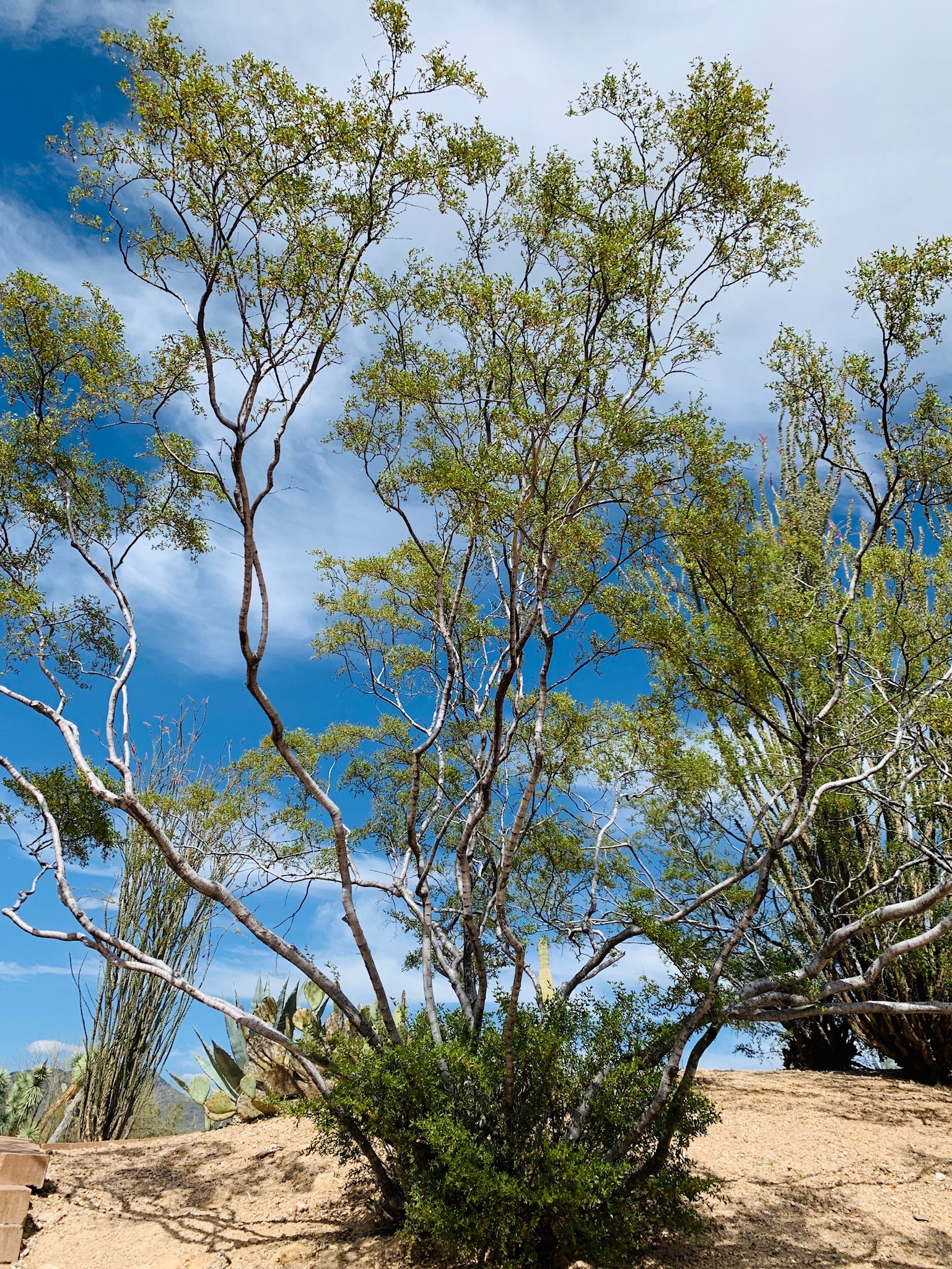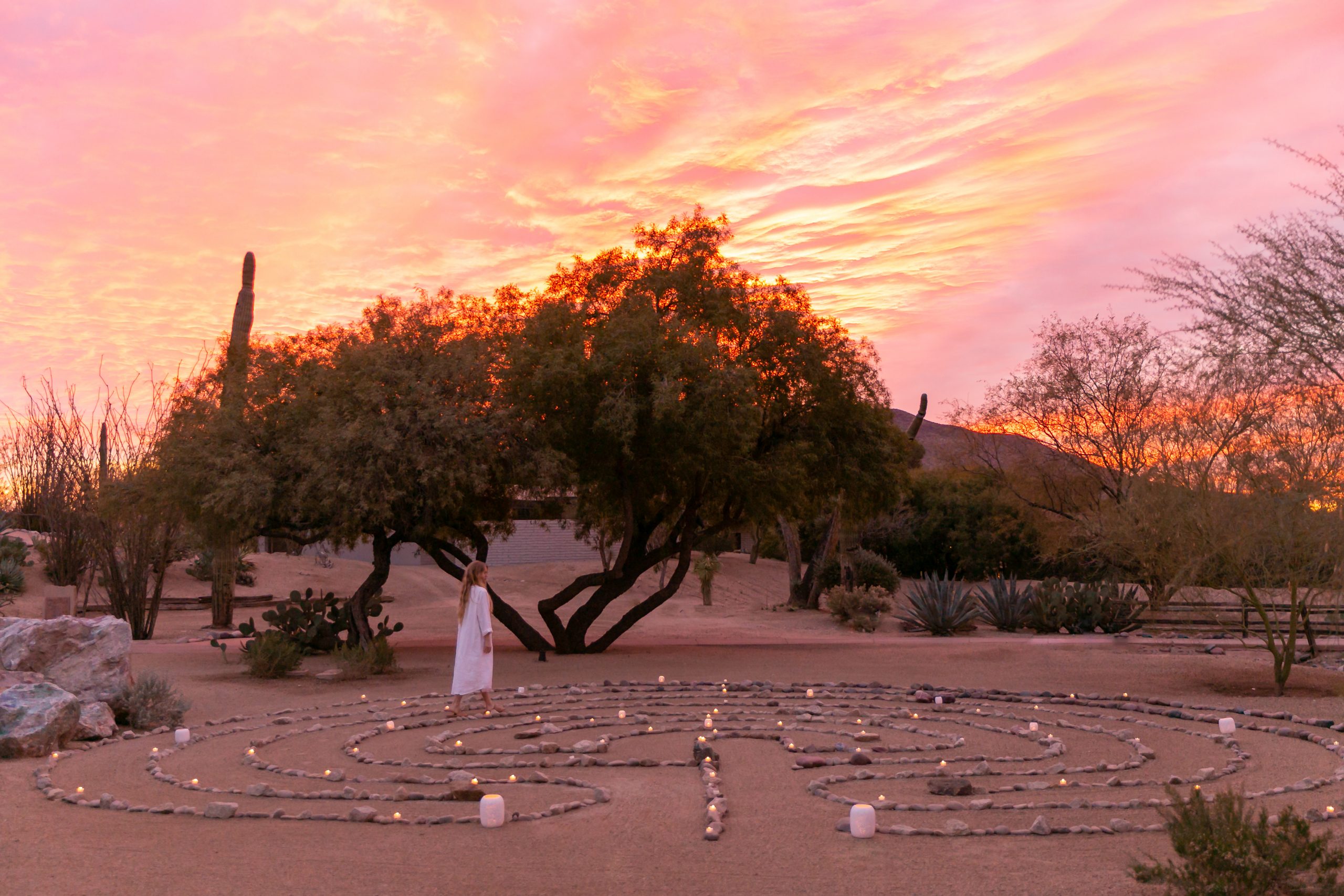A Look Inside CIVANA’s Sonoran Desert Garden
The Native Plant Walk, one of many included wellness offerings, explores the beauty of the unique plants that call CIVANA home. Guests can roam freely throughout the unique Saguaro Garden that winds throughout the property and encompasses a calming meditation Labyrinth.
Sonoran Desert Cacti
The Sonoran Desert boasts a botanical diversity of native plants. It is home to over 2,000 native plant species in a myriad of sizes, shapes, colors, forms, and textures. In addition to the prominent cacti, trees, shrubs, grasses, and wildflowers also abound. These species provide food and shelter for native creatures. The interest in utilizing these drought-tolerant natives in landscapes has increased over the past two decades. As water becomes an increasingly precious commodity, taking advantage of our plant heritage makes sense (and cents!). These plants have adapted and evolved over time to survive the harsh climate and natural predators. Most leaves on desert plants are small or in some cases reduced to spines. Most of the year, the Sonoran Desert is very dry. The yearly average rainfall in Carefree is up to 13 inches. The rain is condensed to just two seasons: one in the summer and another in the winter.
Cacti are icons of the Sonoran Desert. They are a fascinating combination of delicate flowers and fierce-looking spines. Cacti are one of nature’s dichotomies, their thorny sculptural spheres, spiraling columns, and flat paddles are paired with beautiful tissue-paper-like flowers, creating a glorious contrast. The waxy substance on the surface prevents water loss. Cacti have spines instead of leaves, which also protect the plant and aid in water loss. Some species, such as the ubiquitous prickly pear, cover the landscape with displays ranging from yellow to pink. Most species of cacti bloom in April, while others are late bloomers, extending the colorful show.
Saguaro (Carnegiea gigantea)


This giant cactus is easily recognized as the iconic sentinel of the Sonoran Desert. Its unique sculptural form dots the desert landscape. Saguaro (pronounced “suh-waa-row,”) is a distinctive member of the cacti family that grows only in The Sonoran Desert. This tree-sized giant is drought resistant and long-lived—up to 200 years. It can reach a height of over 50 feet and weigh more than two tons. It takes 50-100 years before “arms” appear on the main trunk. A smooth, waxy skin covers the thick, fluted ridges. Two-inch spines line these ribs, which expand like an accordion and store precious moisture that sustains the plant during drought. Many birds such as the Gila woodpecker, cactus wren, hawks, and owls call it home. In late spring, the night-blooming saguaro produces large white blossoms—the state flower of Arizona. The blooms are pollinated by bats. In June, juicy red fruit appears that provides food for wildlife. The saguaro is a protected plant species and special permits must be obtained to move it.
Prickly Pear (Opuntia species)

In spring the prickly pear cacti dot landscapes with its colorful blossoms of yellow, pink, red or purple. Their stems are jointed segments in flat paddles. In late summer and early fall, bright oval fruits called “tunas” grow from the tips of pads. As a true cactus, they bear spines over their surface and clusters of short, fine bristles, which are a skin irritant and difficult to remove. The plant is best known for its edible parts—The “pad,” used as a vegetable and the “pear,” used as a fruit. Not all fruits are red—they also come in green, yellow, purple and orange. This fruit has been an important food source in our area for wildlife and humans. The juicy pulp contains vitamin C and carbohydrates with more than 2,000 seeds. As the fruit ripens, it splits and falls to the ground, offering a feast for desert tortoises, javelinas, coyotes, and native birds.
The culinary team at CIVANA harvests the fruit of the prickly pear at the close of summer. The bounty is turned into delicious sauces for BBQ, juice for cocktails and dressings just to name a few.
Palo Verde (Parkinsonia formerly Cercidium microphyllum)

Palo Verde is the state tree of Arizona. Palo Verde means “green stick” in Spanish, named for its green trunk. It’s deep root system allows it to survive drought. In spring, the tree is covered with bright, yellow flower clusters.
Ocotillo (Fouquieria splendens)

Ocotillo consists of a cluster of long, spiny, pole-like stems that form a dense cluster at the base of the plant. Though drought tolerant, it is not a true cactus. With rainfall, small leaves appear along the stems. A spray of bright, red flowers appears at the ends of the stalks in the spring.
Joshua Tree (Yucca brevifolia)

Joshua Tree’s are extremely drought tolerant. Their foliage grows in a rosette of long, strap-like leaves appear in a cluster at the end of a tall stalk. The leaves have sharp spines at the tips and the leaf margins have shredding fibers. Moths pollinate a large spray of white blooms.
Barrel Cactus (Ferocactus cylindraceus)

This globe-shaped cactus has a series of ridges rimmed with straight or curved spines in several colors depending on the species. Colorful flowers are arranged in a ring at the top. The fruit is yellow and scaly, resembling tiny pineapples.
Cholla (Cylindropuntia)

Cholla are shrubby or tree-like cacti with cylindrical stems composed of segmented joints. They are known for their barbed spines that tenaciously attach to skin, fur or clothing. Flowers vary in color blooming in late spring.
Candelabra Tree Euphorbia (Euphorbia ingens)

An unusual tree-like succulent plant that is native to Southern Africa, and is desert adapted. This family of plants exudes a poisonous, milky latex substance when damaged and can be a skin irritant.
Creosote Bush (Larrea tridentata)

Creosote is an extremely tough, drought resistant, evergreen shrub. This prolific plant has tiny, green, waxy leaves. Small yellow flowers appear and are followed by small, fuzzy, white capsules. After a rain, a pungent odor fills the air as volatile oils are secreted from the plant.
Century Plant (Agave americana)

A long-lived agave species with large, blue-green leaves rimmed with prickly margins and heavy spiked tips. When mature, a bloom stalk rises rapidly from the center of the base. The plant dies after flowering, but is succeeded by many plantlets at the base.
Artichoke Agave (Agave parryi var. truncata)

This aptly named agave is a slow-growing Chihuahuan Desert native. This cold-tolerant perennial has short, gray-blue, compact leaves with reddish-brown teeth and a sharp terminal spine. Small plants form around the base of the plant.
Velvet Mesquite (Prosopis velutina)

Mesquite is the most common tree in the Sonoran Desert. The medium-size tree tolerates hot, dry conditions. The tiny leaves close at night and drop in the cold weather. In spring, yellow flowers form on dense, cylindrical clusters. Long, green legumes mature into tan seed pods.
Meditation Garden – The Labyrinth

At the end of the Saguaro Garden, awaits a sanctuary for quiet reflection. CIVANA’s labyrinth offers a serene setting for walking meditation. Unlike a maze, a labyrinth has no dead ends. Instead, a single path that winds toward the center and then returns you to the beginning. Focus your attention inward, set an intention, choose your meditation or mantra and place your focus on releasing, receiving and returning. This space is the perfect space to take in the natural beauty that surrounds you.



Explore the Wildlife of the Sonoran Desert
BY: DEBBY LARSEN, TUCSON LIFESTYLE HOME & GARDEN EDITOR AND CONTRIBUTING WELLNESS GUIDE.
Explore More
Malas for Your MamasWith Mother’s Day approaching Sunday, May 10, create something meaningful for the special mothers in… Read now |